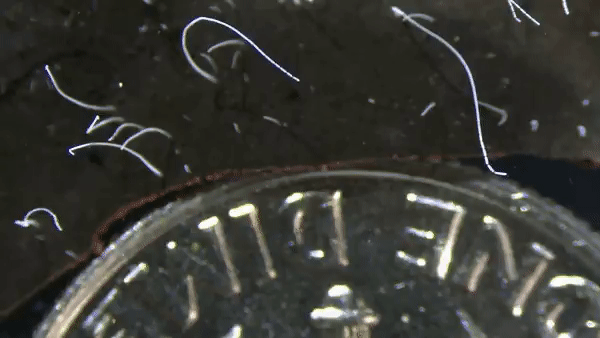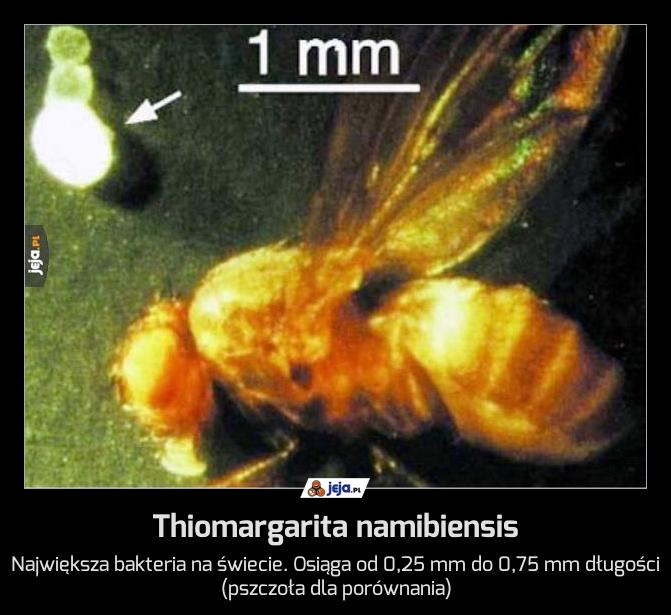Biologists have discovered the largest bacterium ever found, with a single cell 2 centimeters long. Visible to the naked eye, this new species has some odd features that make it like a missing link in the evolution of complex human-like cells.
Most bacterial species are 1 to 5 micrometers in length, but the largest known species is Thiomargarita namibiensis, with a maximum size of 750 micrometers or 0.75 mm. But, this newly identified species is so large that it “blows all records”, with its average length being 0.9 cm and the largest specimen recorded at 2 cm. To make it easier to imagine, this single cell is the size of a peanut you see every day.

The new bacteria’s single-celled filaments are visible when placed next to a coin.
This enormous size also completely disrupts any understanding of scientists about how large bacteria can be. It has long been believed that the size of bacteria is limited by the distance their molecules can travel to exchange nutrients with the environment. Because if nutrients can’t make their way from the membrane to their interior, and if toxins can’t make the opposite journey, then the organism won’t be able to survive.
So how did the newly discovered super giant bacteria patch and solve this?
As it turns out, it’s essentially a sac filled with water, occupying 73% of its volume, that propels the contents of the cell all the way up to the outer membrane. So the important molecule does not need to travel the entire width of its body.
This is the same mechanism that allowed the bacteria to hold the previous record for size, Thiomargarita namibiensis, a sulfur-eating bacterium that grows larger than most bacteria when close to a pollen grain. Noting these and other similarities found in a genetic analysis, the team proposed that the new species also belong to the same genus, with the proposed name being Thiomargarita magnifica.

The record for bacterial size of Thiomargarita namibiensis has been broken.
The creature was actually first discovered about a decade ago, as bundles of white fibers growing on rotting mangrove leaves in a Caribbean swamp. But at the time, its discoverer, marine biologist Olivier Gros, didn’t recognize them as bacteria, let alone think of them as single cells. That identification has only emerged recently, through detailed analysis. Scientists even think that if they weren’t trampled on, eaten, blown by the wind or washed away by waves, they could have grown even bigger.
But, its physical size is not the only giant thing that exists about this bacterium. Genomic analysis shows that its genome is also very large, containing 11 million bases and about 11,000 genes, nearly three times larger than most common bacterial genomes with only about 4 million bases and 4 million bases. about 3,900 genes. On closer inspection, the team discovered that the genome was quite repetitive, with more than half a million copies of certain sequences.
And this strange bacteria also has an element of strangeness. These DNAs are packaged inside a membrane vesicle, and this is something that is typically characteristic of more complex life forms. It is this that blurs the lines between the two main classifications of life forms, prokaryotes and eukaryotes.
Researchers have long divided life into two groups: prokaryotes, which include bacteria and single-celled microorganisms known as archaea, and eukaryotes, which include everything from yeast to most multicellular life forms, including humans. Prokaryotes have free-floating DNA in the cell, while eukaryotes pack their DNA in the nucleus. Eukaryotes also divide various cell functions into vesicles called organelles and are able to move molecules from one compartment to another – something prokaryotes cannot.
Refer New Atlas
